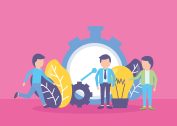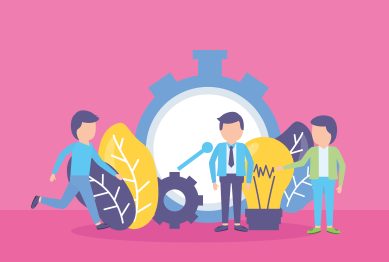In a world that’s constantly changing, true innovation often arises from revisiting and reimagining the past. Reframing old notes and revisiting previous ideas can unlock new perspectives and solutions, sparking progress across industries. This process of reframing old concepts has the power to evolve and shape the future in ways we might not initially imagine.

The Power of Reframing: Why Old Notes Matter
In the era of rapid technological advancements and constant innovation, it’s easy to dismiss old ideas as outdated or irrelevant. However, when you take a step back and reframe what’s already been done, a wealth of untapped potential emerges. Reframing is not just about rethinking; it’s about strategically challenging the status quo, taking old concepts, and using them as a springboard for the future. Reframing old notes—whether they’re from decades ago or just a few months old—can be the catalyst for new innovations.
By reframing, we don’t simply return to the past. We examine it from new angles, using modern knowledge and technologies to find new applications. This creates a dynamic exchange between past insights and present solutions, driving the evolution of entire industries.
The Art of Reframing: A Tool for Evolution
Reframing doesn’t just apply to businesses or tech; it’s a mindset that can transform every aspect of life. In the context of problem-solving, innovation, and creativity, reframing old notes (whether it’s previous business strategies, scientific ideas, or even cultural practices) allows individuals and organizations to tap into evolution in new ways.
For example, traditional industries like agriculture or construction, where groundbreaking innovations are often derived from revisiting past practices with a fresh lens. It’s not always about reinventing the wheel but about finding better, more efficient ways to utilize existing knowledge. This could mean using past farming techniques combined with new technology to optimize crop production or employing historical architectural principles to design more sustainable buildings.
How Reframing Has Led to Some of the Greatest Technological Advancements
Some of the most significant advancements in recent decades have come from companies and industries that looked back to move forward. For example:
- Artificial Intelligence (AI): Early AI models from the 1950s laid the groundwork for modern deep learning algorithms. However, it was by reframing the limitations of early AI that companies like Google and OpenAI have revolutionized everything from language processing to automated decision-making.
- Electric Vehicles (EVs): Early models of electric cars, such as the ones from the late 19th century, were not commercially viable. However, by reframing the way we think about energy sources and combining modern tech with old electric models, companies like Tesla have created an entirely new market.
- Space Exploration: The work of early astronauts and scientists, although primitive by today’s standards, has become the foundation for contemporary private space exploration companies like SpaceX. Reframing early ideas about space travel, rethinking safety, and utilizing new materials have pushed the boundaries of what’s possible.
Reframing Old Notes in the Context of Business and Strategy
For businesses, reframing old strategies can be the difference between staying stagnant or pushing ahead of competitors. By revisiting past mistakes, missed opportunities, and previous successes, businesses can refine their approaches and create something more dynamic.
Reframing old ideas doesn’t always mean changing the entire business model or product. Sometimes it’s about tweaking existing processes or adopting new technologies to address evolving market demands. This reframing can revitalize brands and inject fresh life into products that might otherwise be perceived as obsolete.
Examples in Business Strategy:
- Retail Industry: Traditional retail once thrived on in-person shopping experiences, but as e-commerce grew, many brick-and-mortar stores struggled. Companies like Walmart and Target successfully reframed their approach by combining their strong physical presence with a digital strategy, thus adapting to the demands of today’s consumers.
- Health and Fitness: The global health crisis revealed gaps in the healthcare system, and companies had to reframe how they approach patient care. Telehealth services and at-home diagnostics emerged as a result, offering more accessible solutions for millions of people worldwide.
- Marketing Evolution: Traditional marketing methods focused on mass media channels such as TV, radio, and print. Today, digital marketing has reframed the advertising landscape. Social media, targeted ads, and influencer marketing are now the primary ways brands reach and engage with their customers. Brands like Nike have managed to take the traditional concept of brand loyalty and reframed it by using community-based digital campaigns to build a stronger connection with their audience.
The Evolution of Education: A Fresh Take on Traditional Methods
Reframing old educational systems and methods is another area where evolution is happening. With the advent of digital technology, education has undergone a transformation, but the core principles from decades ago still serve as valuable foundations. By incorporating technology, online platforms, and modern teaching tools, education systems are evolving into more inclusive, adaptive, and efficient models. Online courses, virtual classrooms, and AI-driven personalized learning systems are transforming education in ways that were unimaginable just a few years ago.
Reframing doesn’t mean discarding everything traditional, though. The use of blended learning, which combines the benefits of in-person education with the flexibility of online learning, is a prime example of how older models are evolving to meet current needs. Teachers are becoming facilitators of learning rather than just instructors. The traditional classroom is being supplemented by digital tools that enhance engagement and promote interactive learning.
- Blended Learning: Traditional classroom-based education combined with virtual lessons is an example of how old ideas (like face-to-face education) are being rethought for a more dynamic, future-proof approach.
- AI in Education: Artificial intelligence is now reframing how education can be personalized, providing tailored learning paths for students that allow them to progress at their own pace, all while ensuring the content meets specific learning objectives.
The Role of Reframing in Personal Growth
On a personal level, reframing old beliefs can lead to extraordinary growth. Many individuals struggle to change their habits or thought patterns, but reframing old notes about their lives—such as reconsidering past failures or challenges—can help them evolve.
For instance, someone who has always struggled with self-doubt may choose to reframe past failures as learning experiences rather than signs of inadequacy. This reframing leads to greater confidence, self-improvement, and resilience. Additionally, reframing can help individuals break free from outdated self-limiting beliefs, allowing them to embrace new opportunities and thrive in previously uncharted territories.
Key Areas for Personal Reframing:
- Failure as Feedback: When reframing personal setbacks, individuals can view them as stepping stones toward success, rather than obstacles. This new perspective fosters personal growth and adaptability.
- Resilience in Facing Challenges: Instead of viewing difficulties as insurmountable, reframing allows people to see challenges as opportunities for development and transformation.
Reframing: The Future of Problem-Solving
Reframing goes beyond rethinking the past—it’s about applying new insights to challenges. Today’s biggest problems—like change, mental health crises, or urbanization—will require creative solutions that reframe what we know about those issues.
- Urban Planning: Urban spaces are rapidly evolving, with cities revisiting and rethinking ancient city-planning models while incorporating technologies like smart homes, self-driving cars, and green infrastructure.
- Sustainability: Environmental conservation efforts are reframing traditional concepts of resource consumption. The circular economy, which emphasizes reusing materials and reducing waste, is becoming a cornerstone of modern sustainability.
- Healthcare: Traditional healthcare systems are being reframed through the use of digital health tools, telemedicine, and preventative care. These changes provide more accessible, affordable, and effective healthcare solutions for the global population.
Final Thoughts: Reframing as a Catalyst for Evolution
Reframing old notes invites evolution in all its forms. By revisiting past ideas with a fresh perspective, individuals and organizations can make groundbreaking discoveries and create lasting change. Whether in technology, business, education, or personal growth, reframing is the key to continuous progress. The process of reevaluating and reimagining old notes sparks new ideas that drive innovation across all sectors. It challenges conventional thinking and inspires creative solutions to complex problems.
Reframing is not just about nostalgia or nostalgia-driven innovation; it’s about taking practical steps to use our past as the foundation for the future. When we look at past failures and successes with a new lens, we are often able to create the next wave of progress, discovery, and evolution.
References:
- Reframing Innovation (2023). Journal of Business Strategy. Available at: https://www.journals.com (Accessed: 29 July 2025).
- The Evolution of AI (2022). TechCrunch. Available at: https://www.techcrunch.com (Accessed: 29 July 2025).
- The Impact of Reframing in Education (2021). Harvard Educational Review. Available at: https://www.harvard.edu (Accessed: 29 July 2025).









